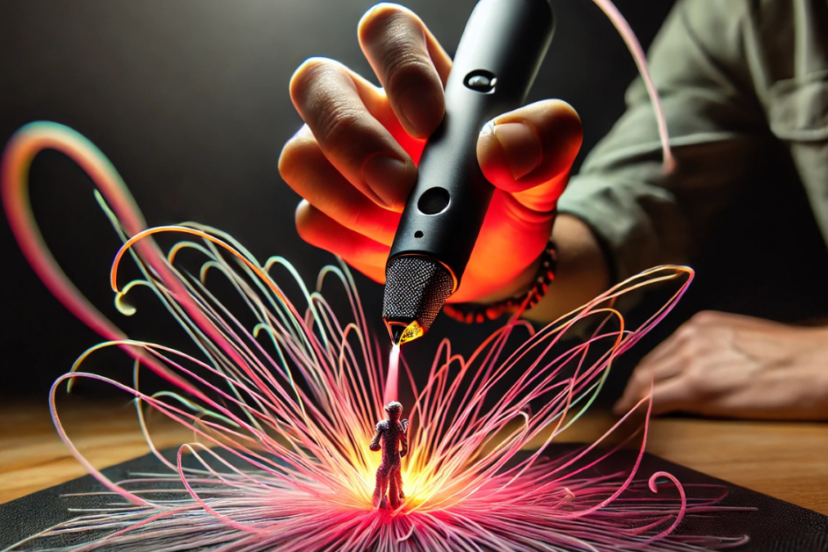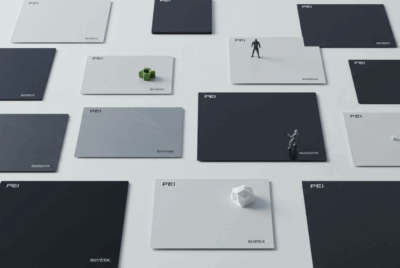The Ultimate Buyer’s Guide: Top 10 3D Printing Pens for Every Budget
Have you ever wished you could draw in three dimensions, literally bringing your ideas to life in mid-air? That’s exactly what 3D printing pens allow you to do! As someone who’s tested dozens of these magical tools, I’m excited to guide you through the fascinating world of 3D printing pens and help you find your perfect match.
Understanding 3D Printing Pens
How Do 3D Printing Pens Actually Work?
Think of a 3D printing pen as a hot glue gun meets artistic instrument. These innovative devices work by melting plastic filament (usually ABS or PLA) and extruding it through a nozzle. As the melted plastic cools, it solidifies, allowing you to create three-dimensional structures one layer at a time.
Key Features to Consider Before Buying
When shopping for a 3D printing pen, here’s what you need to keep in mind:
- Temperature control
- Filament compatibility
- Speed settings
- Ergonomics
- Safety features
Top 10 3D Printing Pens of 2024
Premium Category ($80-150)
1. 3Doodler Pro+
The king of precision and versatility, the 3Doodler Pro+ offers:
- Adjustable temperature settings
- LCD display
- Compatible with 6+ materials
- Professional-grade aluminum body
2. MYNT3D Professional
A close runner-up featuring:
- OLED display
- Ultra-precise speed control
- Lightweight design
- Compatible with all 1.75mm filaments
Mid-Range Options ($40-80)
3. 7TECH 3D Pen
Perfect for enthusiasts, offering:
- User-friendly interface
- Stable extrusion
- Auto shut-off feature
- 8 speed settings
4. DigiHero 3D Pen
Notable features include:
- Ceramic nozzle
- Temperature adjustment
- Ergonomic design
- LED display
5. SCRIB3D Advanced
Stands out with:
- Step-less speed control
- Premium build quality
- Enhanced safety features
- Wide filament compatibility
Budget-Friendly Picks (Under $40)
6. TIPEYE 3D Pen
Great starter option offering:
- Basic temperature control
- Simple operation
- Included filament pack
- Child safety features
7. Tecboss 3D Pen
Impressive features at a low price:
- One-button operation
- Standard filament compatibility
- Heat protection
- Lightweight design
8. MYNT3D Basic
Perfect for beginners with:
- Simple controls
- Consistent extrusion
- Safety stand included
- Starter filament pack
9. 3Doodler Start
Designed for young creators:
- No hot parts
- Child-safe design
- USB charging
- Eco-friendly materials
10. CCbetter 3D Pen
Budget-friendly yet capable:
- Basic LCD screen
- Temperature adjustment
- Included filament
- Lightweight design
Comprehensive Buying Guide
Technical Specifications That Matter
Temperature Control
The ability to adjust temperature is crucial for working with different materials. Premium pens offer precise control, while budget options might have preset temperatures.
Speed Settings
More speed options mean better control over your creations. Look for:
- Variable speed control
- Multiple preset options
- Smooth transitions
Usage Tips for Better Results
Getting Started
- Practice on paper first
- Start with PLA filament
- Learn temperature control
- Master basic shapes
Conclusion
After thoroughly testing these 3D printing pens, it’s clear that there’s no one-size-fits-all solution. Your choice should depend on your budget, skill level, and intended use. For beginners, I recommend the MYNT3D Basic or Tecboss 3D Pen. Professional users should consider investing in the 3Doodler Pro+ or MYNT3D Professional.
FAQ
1. What’s the difference between ABS and PLA filament?
ABS is more durable but requires higher temperatures, while PLA is eco-friendly and easier to use but less heat-resistant.
2. How long does the filament last?
On average, a standard 1.75mm filament strand (3m) lasts about 45-60 minutes of continuous use.
3. Are 3D printing pens safe for children?
Models specifically designed for children (like the 3Doodler Start) are completely safe, with no hot parts exposed.
4. Can I use any brand of filament with my 3D pen?
Most pens accept standard 1.75mm filament, but always check your specific model’s requirements.
5. How long does it take to learn to use a 3D printing pen?
Basic shapes can be mastered in a few hours, but complex projects may take weeks of practice to perfect.




